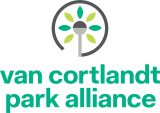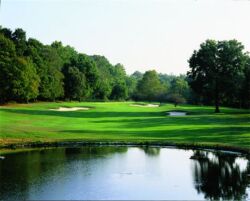Van Cortlandt Park
Van Cortlandt Forest - the Forests of New York City
More than half of Van Cortlandt Park’s 1,146 acres consists of forest. A varied topography of high, rocky ridges alternating with low, moist valleys provides the base for diverse forest flora. In the Northwest Forest, which is 188 acres, oak-hickory forest grows on rocky heights overlooking valleys dominated by tulip trees (Liriodendron tulipfera) and century-old oaks. Occurring on well-drained sites, oak-hickory forests have soils that are usually loams – mixtures of clay, sand, silt and organic matter. The Northeast Forest contains low-lying, moisture-retaining land ideal for sweetgum (Liquidambar styraciflua), red maple (Acer rubrum), and pin oak (Quercus palustris).
There were no forests in New York City 15,000 years ago, as a glacier dominated the landscape. As the global climate warmed, the glacier receded and torrents of meltwater carried boulders, gravel, and sand that were deposited in a high ridge marking the southern limit of the glacier’s advance, called a terminal moraine. The dunes and drifts left behind by storms coming off the glacier were early sites of soil formation, providing an opportunity for plant growth.
As grasses, sedges, mosses, lichens, and shrubs began to colonize the area, their roots held the sand in place. Successive generations of dead plant material added organic matter and nutrients to the developing soil. The accumulating soil, with continued warming trends, allowed for the growth of more trees. These trees were widely spaced, and grasses and sedges remained a major component of the vegetation. Kettle ponds formed when huge chunks of ice that had been submerged under soil, finally melted and left deep depressions filled with water. Over time, forests took hold of the land.
There are four main layers to a forest: the canopy layer, the understory, the shrub layer, and the ground layer. The canopy layer is made of the tallest trees whose dense, leafy crowns absorb almost all of the sun’s light; sometimes only one percent filters through to the ground. Consequently, other forest plants have to adapt their structure, leaf emergence, and growth behaviors to get the nourishment they need from such a scarce resource. The understory is composed of small trees, which flower and leaf out at the same time as shrubs and can tolerate the lower light levels. Many birds reside here and the flora provides a space between the forest floor and the canopy for such animals as squirrels (Sciuridae), raccoons (Procyon lotor), and opossums (Didelphis marsupialis). The shrub layer consists of woodland shrubs that flower first, then leaf-out. Shrubs can range in height anywhere from knee-high plants to bushes that reach up ten feet or more into the understory. The ground layer is composed of the lowest growing forest plants, the wildflowers and ferns. These plants, which can be as low as a carpeting layer or weeds up to six feet tall, are the first plants to emerge in the spring.
Ground layer wildflowers are extraordinarily diverse in the Northwest Forest. There is bloodroot (Sanguinaria canadensis), trout lily (Erythronium americanum), rattlesnake root (Prenantles racemosa), and many asters, including heart-leafed aster (Aster divaricatus). The forest contains one of the highest concentrations of rare plants in the city, including giant yellow hyssop (Agastache neptoides), golden seal (Hydrastis canadensis), and wingstem (Verbesina alternifolia).
The Old Croton Aqueduct Trail, which cuts the park in half, provides a wonderful woodland walkway. In this rich forest, stands of black walnut (Juglans nigra), American sycamore (Platanus occidentalis), and American elm (Ulmus americana) are present, along with sugar maple (Acer saccharum), which is usually native to New England, and rarely seen in these parts.
Check out your park's Vital Signs
Clean & Safe
Green & Resilient
Empowered & Engaged Users
Share your feedback or learn more about how this park is part of a
Vital Park System
Downloads
Links
Contacts
Van Cortlandt Park Alliance: (718) 601-1460
Mosholu Golf Center and Driving Range: (718) 655-9164
Park Enforcement Patrol: (718) 430-1815
Special Events Permits: (718) 430-1848
Sports Permits: (718) 430-1840
Tennis Permits: (718) 430-1848
Riverdale Equestrian Centre: (718) 548-4848
Urban Park Rangers: (718) 548-0912
Van Cortlandt Golf Course: (718) 543-4595
Van Cortlandt House Museum: (718) 543-3344
Van Cortlandt Pool: (718) 548-2415
Friends of Van Cortlandt Park: (718) 601-1460
Van Cortlandt Nature Center: (718) 548-0912












